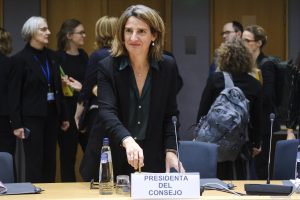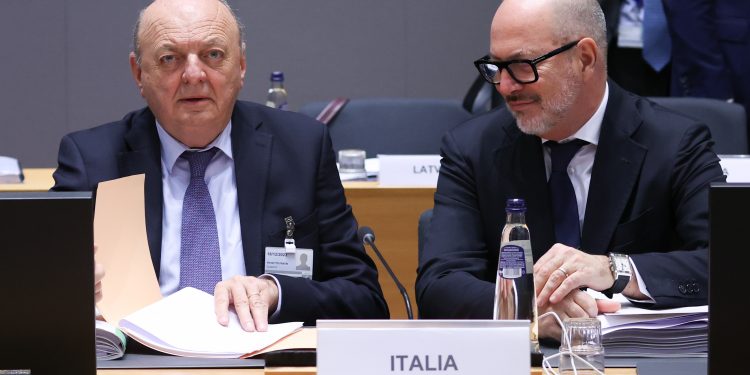Brussels – Italy alone against everyone in Brussels. The minister of environment and energy security, Gilberto Pichetto Fratin, is the only one among the Twenty-Seven to vote today (Dec. 18) against the adoption of the EU Council’s negotiating mandate on the regulation on packaging and packaging waste, proposed by the European Commission in November 2022 as part of the broader circular economy package.
The negotiating mandate approved by the Environment Council is (perhaps for the first time) a more ambitious text in environmental terms than the one adopted by the EU Parliament last November 22 in Strasbourg. It is usually the other way around, with the European Parliament expected to be the most ambitious of the three European institutions. The council’s text provides more flexibility than the commission’s original proposal but has retained several targets that the EU Parliament deleted or scaled back in large part under Italian pressure, such as banning the placing on the market of single-use plastic packaging used for fruit and vegetables, such as plastic salad bags.
At this morning’s meeting, the Spanish presidency presented several adjustments to the compromise text to introduce more flexibility and derogations and try to achieve a larger majority than the qualified one needed for a green light (which is obtained when 55 percent of the countries also representing 65 percent of the EU population vote in favor). All but one of the member states supported the compromise text.

Pichetto’s “red lines”
The final text—which will now have to be negotiated with the EU Parliament for a final agreement—”absolutely does not meet what our country needs,” Minister Pichetto charged, speaking to reporters on the sidelines of the Environment Council and claiming that Italy is a “country that has 56.5 percent separate waste collection,” with a European average of “48 percent,” but was not satisfied with the changes made by the Spanish presidency.
Italy had asked for an extension of a few years for compostable packaging requisites. The other request was for “different parameters for reuse and recycling” with exemptions for countries that can demonstrate that they have a recycling quota with percentages above 75-80 percent (as did the Euro Parliament). Italy supports the Strasbourg chamber’s line, since “the council’s position is much more rigid, much closer to the European Commission’s proposal,” in terms of constraints on reuse with binding targets from the outset. Trialogue negotiations with the EU Parliament, mediated by the European Commission, will begin next year, and Pichetto hopes that in the final compromise, “the parliament’s position will prevail.” The institutions aim to reach a final agreement by the end of the current legislative term.
What the EU Council mandate provides for
The European Commission’s proposal—dating November 30, 2022—insisted mainly on four lines of action to reduce packaging waste: reuse of containers with minimum targets for companies; a ban on packaging considered “nonessential” (such as single-use shampoo sachets of hotels or those in restaurants and cafes); designing by 2030 all packaging to be 100 percent recyclable; and mandatory rates of recycled content that manufacturers will have to include in new plastic packaging.
While arguing that all packaging placed on the market must be recyclable as proposed by the Commission, member states agreed in the mandate that packaging will be considered recyclable if it is designed for material recycling and when packaging waste can be collected separately, sorted, and recycled on a large scale (the latter condition will apply from 2035). The overall approach—a note explains—maintains the 2030 and 2040 main targets for minimum recycled content in plastic packaging, and by 2034, the commission will need to review the implementation of the 2030 targets and assess the feasibility of the 2040 targets.
Member states kept the commission’s proposed targets on packaging waste reduction (which the EU Parliament also kept): 5 percent by 2030, 10 percent by 2035, and 15 percent by 2040. These targets will be subject to review by the commission eight years after the regulation enters into force.
Member states then set new reuse and refill targets for 2030 and 2040. Different targets apply to large appliances, e.g., transport packaging for food and beverages, alcoholic and non-alcoholic beverages (excluding wine), transport packaging (excluding packaging used for dangerous goods or large equipment and flexible packaging in direct contact with food), and grouped packaging. Cardboard packaging is also exempt from these requirements.
A new possibility was introduced for companies to form groupings to meet reuse targets in the beverage sector. Pichetto’s Italy opposed this as well because it is limited to the beverage sector and potentially harmful to a business reality such as Italy’s, where small and medium-sized companies are widespread.
Under the new rules, by 2029, member states will have to ensure the separate collection of at least 90 percent of single-use plastic bottles and metal beverage containers annually. As in the European Commission’s proposal, the new rules introduce restrictions on certain packaging formats, including single-use plastic packaging for fruits and vegetables (which the EU Parlament “saved”, lifting the ban), for food and beverages, condiments, sauces in the HORECA sector, and for small cosmetic and bath products used in hotels (e.g., shampoo bottles or body lotions).
The part of the legislation most criticised by Italy was the one concerning reuse, which is regulated by Article 26, with mandatory targets for companies. The European Parliament in its mandate adopted a waiver on the targets if the member state achieves 85 percent separate waste collection for recycling in the years 2026 and 2027. Italy had hoped there would be such a waiver in the Council’s mandate as well, but there wasn’t.
English version by the Translation Service of Withub




